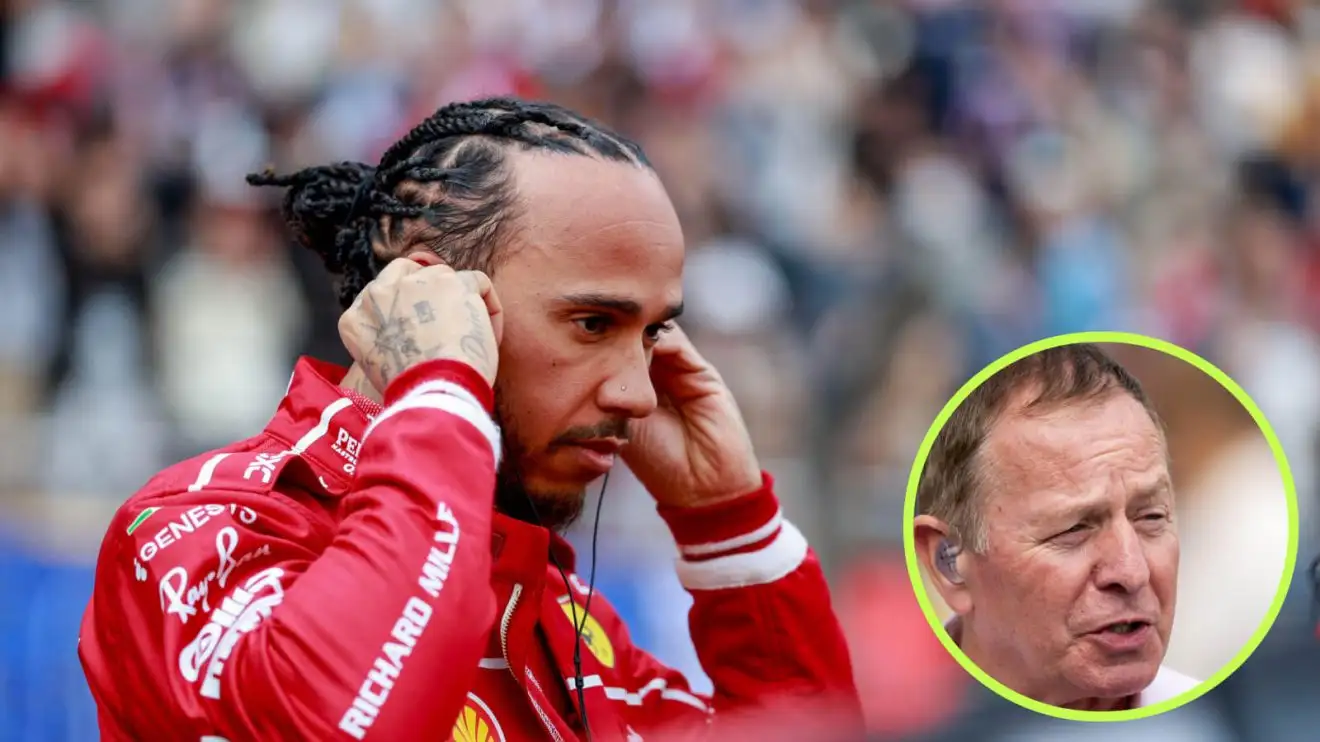Martin Brundle finds potential new ‘factor’ behind Lewis Hamilton DSQ
25 Mar 2025 12:30 PM

Martin Brundle’s theory on why Hamilton’s Ferrari suffered excessive skid block wear
Martin Brundle has pondered whether Lewis Hamilton’s late charge after his second pit stop in China contributed towards his post-race disqualification.
Hamilton took the chequered flag in sixth place at the Shanghai International Circuit, the Ferrari driver two seconds behind his team-mate Charles Leclerc, only for the team-mates to be disqualified after the Grand Prix.
Why did Lewis Hamilton’s Ferrari suffer excessive skid block wear?
Hamilton’s SF-25 underfloor plank was found to have exceeded the permitted level of wear, resulting in the driver’s disqualification.
“The plank assembly of Car 44 was measured and found to be 8.6mm (LHS), 8.6mm (car centerline), and 8.5mm (RHS). This is below the minimum thickness of 9mm specified under Article 3.5.9 of the Technical Regulations,” read the stewards’ statement.
“During the hearing, the team representative confirmed that the measurement is correct and that all required procedures were performed correctly. The team also acknowledged that there were no mitigating circumstances and that it was a genuine error by the team.”
More analysis from the Chinese Grand Prix:
👉 Verdict: What we think Red Bull should do with Liam Lawson
👉 The Liam Lawson data Red Bull won’t want to see
Brundle though wonders if Hamilton’s late-race charge as he tried to chase down Max Verstappen, having opted for a two-stop strategy that put him on much fresh tyres, played a role in his skid block wear.
Running fourth and fifth ahead of Verstappen, the Dutchman came alive in the second half of the race and closed in on the Ferrari team-mates with the Scuderia making the call to pit Hamilton. Back out behind Verstappen, Hamilton went on a charge but wasn’t able to close in on the Red Bull driver who went on to overtake Leclerc for fourth.
The Ferrari pairing crossed the line fifth and sixth before their dual disqualification.
Writing in his post-race column for Sky Sports, Brundle explained: “Somehow on lower fuel, or simply track conditions, and probably even the realisation that he [Verstappen] didn’t need to babysit the tyres so much, this allowed him to catch the Ferraris. In fact Max would deliver his fastest and front-running lap time on the final tour, which is a bit confusing.
“Hamilton was pitted as there was nothing much to lose except putting him behind Verstappen but on much better tyres. Lewis would then push hard to the end of the race, a factor which may well have contributed to his eventual disqualification.”
“Hamilton’s car was thrown out for running too close to the ground and overly wearing away the legality skid block underneath by half a millimetre,” added the former F1 driver. “This rule is in place to stop teams running these ground-effect aero cars too low to gain performance but then trashing super expensive floors every day.”
But after a race that made for “painful reading for Ferrari”, Hamilton wasn’t the only Scuderia driver thrown out of the results – Leclerc was also disqualified as too was Alpine’s Pierre Gasly.
“Leclerc and Gasly were thrown out due to being marginally underweight,” Brundle said.
“Rather like we saw last year in Spa with George Russell, a long run on one set of tyres uses up a few kilos of tyre tread. Also the race pace was strong and there were no Safety Cars, and so fuel usage was high, consuming more mass.
“Leclerc’s broken front wing was allowed to be replaced but he was still underweight. Which ever way you cut it, that’s a miscalculation by the team to not leave enough margin for all circumstances.”
“Especially in the Italian media,” he concluded, “it will be painful reading for Ferrari this week despite the Sprint victory.”
Ferrari are fifth in the Constructors’ Championship after two races having scored just 17 points. They trail McLaren by 71.
Read next: Paddock whispers over Ferrari plank wear leads to new SF-25 set-up theory
Lewis Hamilton
Martin Brundle